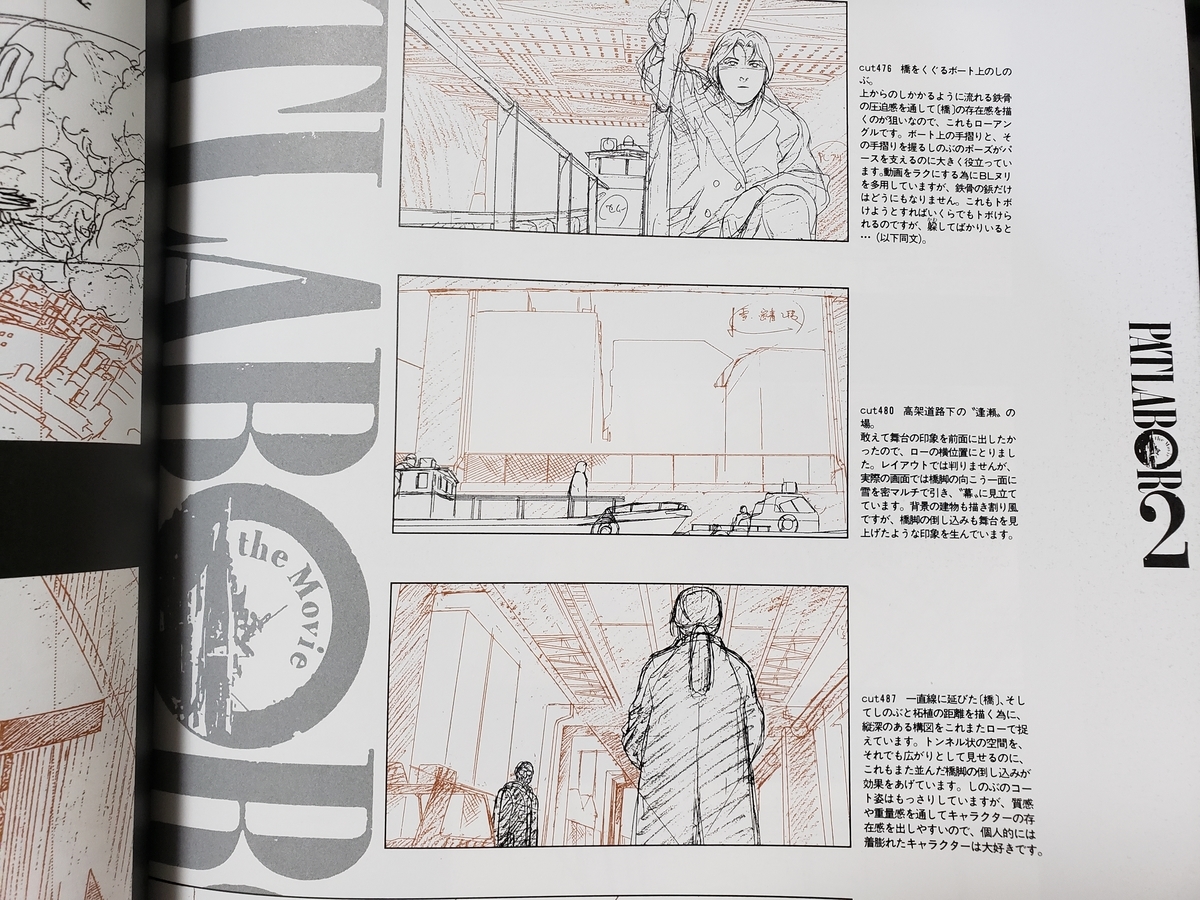-----
There are several Mamoru Oshii book lists on the Internet, but they do not provide detailed descriptions of the contents. My collection of Mamoru Oshii books is not yet complete, but I would like to write a short summary for each of those books.
I apologize in advance for any grammatical errors or incorrect information.
-----
title: METHODS 「パトレイバー2」演出ノート
(METHODS from Layouts of "PATLABOR 2 the Movie")
release date: 12/20/1994 (reprinted on 2019)
publisher: KADOKAWA (reprinted by Fukkan.com)

[contents]
introduction
cockpit
window-interface
interview with Masatsugu Arakawa
interview with Toshihiko Nishikubo
concept photos
military footage, virtual space
interview with Seiichi Tanaka
the birds
ruins
interview with Hiromasa Ogura
bridge
city
follow shot
perspective
interview with Akihiko Takahashi
Japanese architecture space
interview with Satoshi Kon
mob
materials
mechanism
interview with Atsushi Takeuchi
interview with Takashi Watabe
composition
lens
interview with Kazuchika Kise
angle
action

[review]
If I had to pick Mamoru Oshii's best book, it would be this one.
It is a layout sheet collection of P2 with Oshii's commentary. Since Oshii realized the importance of layout, he developed his own layout system in the Patlabor series. That system was completed in Patlabor 2.
Some say this book was used as a textbook by anime creators. According to Ryusuke Hikawa, every animation studio in those days had a copy. There were not that many detailed textbooks like this written by anime creators themselves. Even without the historical importance, it is very enjoyable to read. It includes well-designed layout sheets and Oshii's very logical explanations. Even for a casual anime fan like me, it will change the way you look at anime.
It also shows Oshii's clear philosophies about anime cinematography.
It doesn't contain a glossary, so you need to learn some anime and film terms beforehand.
*When you read this book, you can clearly see that Oshii thematized "time" in P2. Dynamic time and static time are the themes of the film. For example, in the chapter on the cockpit, he says this:
"Subjectively, it is static, but objectively it is moving. Or, subjectively moving, but objectively static. The cockpit space is dominated by such a time difference between inside and outside. Information through windows and interfaces becomes the only truth in that space. People communicate without facing each other. In P2, most of the dialogue takes place in the cockpit spaces. The characters' "situation" or "environment" are expressed through such composited images."
*The same theme is mentioned in the chapter on ruins as well:
"Ruins have three types of time. Past, present, and future. When we say near-future, we're actually talking about the present. When we say past, we expect some futuristic things beyond it. We bring multilayered 'time' into a fictional world. That is the ruin."
(I think this part is a quote from some other book, but I couldn't identify the source.)
*Oshii doesn't mention this, but the theme of time difference was inspired by Paul Virilio. P2's movie brochure has a quote from Virilio's book.